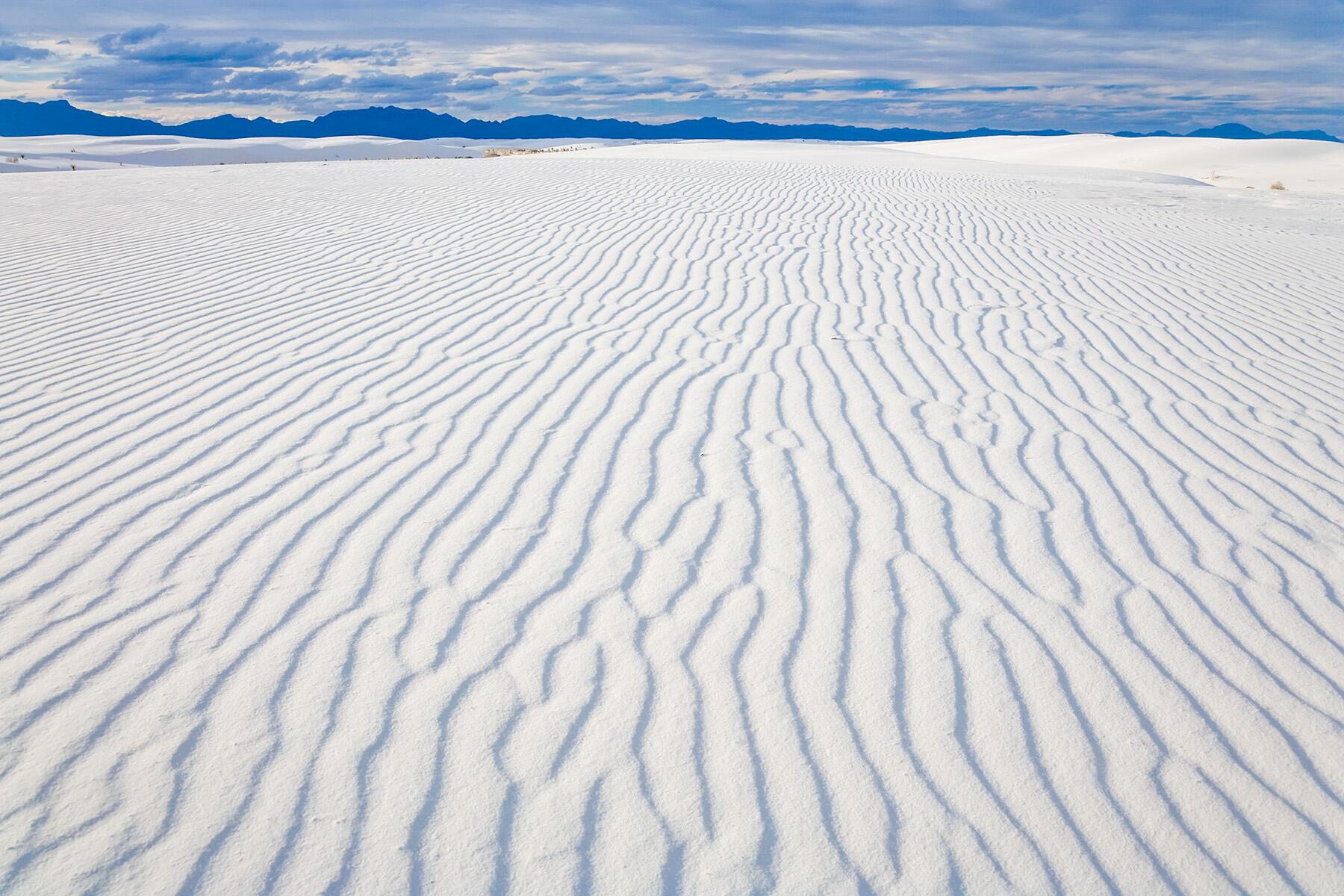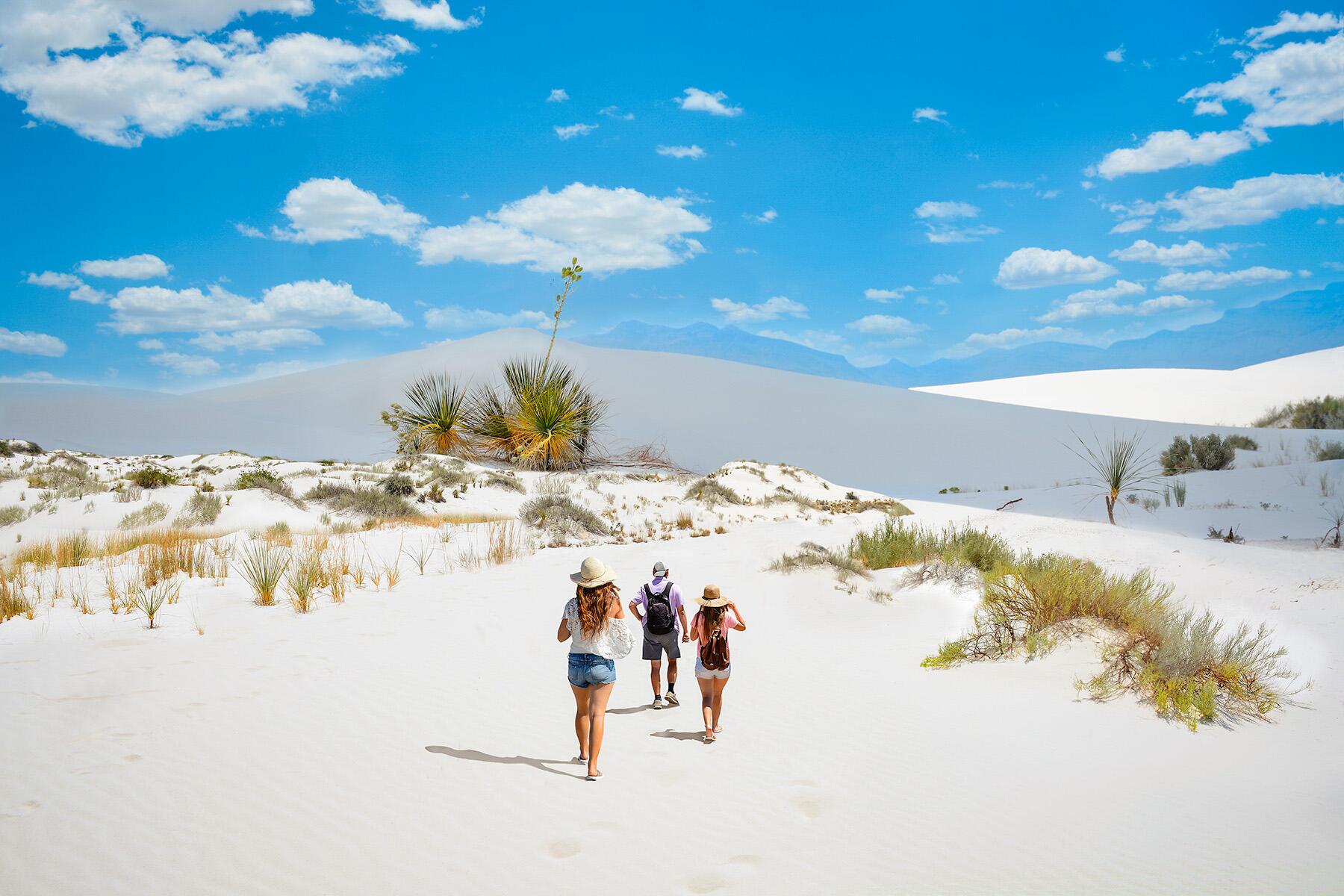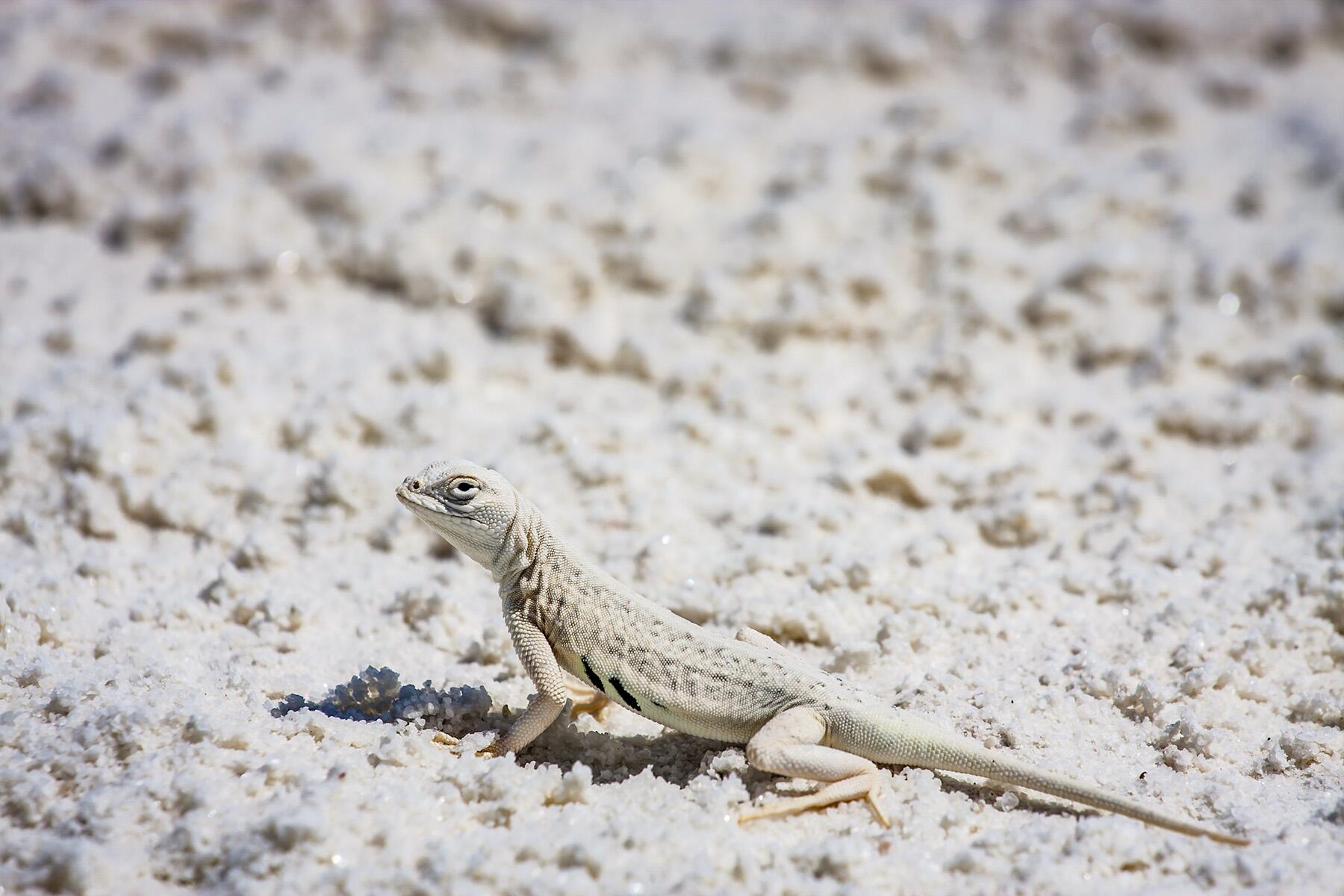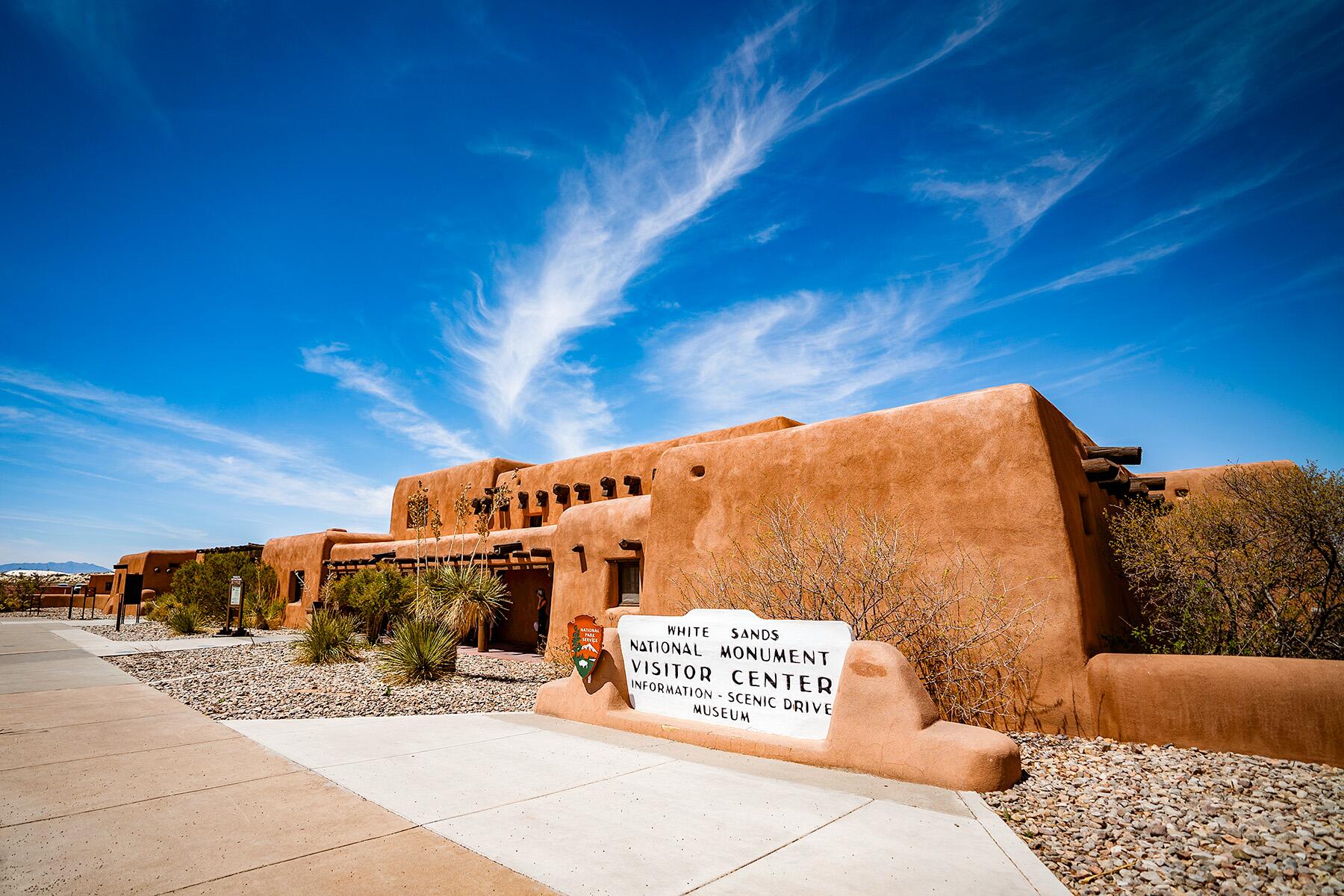This Southern New Mexico desert has a landscape like none other.
Some liken White Sands, New Mexico, to a desolate lunar landscape. Others are reminded of a midwinter snowfall. But all agree that it is like no other place they have ever seen—miles of pure white sand stretch as far as the eye can see.
Don’t think you are on a tropical beach, though. White Sands National Park is more than 500 miles from the Gulf of California, the nearest ocean. Nor are you in a winter wonderland; summer temperatures can top 100 degrees. This is a landscape that gleams 365 days a year. So, what exactly are the white sands that give this beautiful place its name? We spoke to Patrick Kark, a White Sands National Park ranger, to learn more about this incredible phenomenon.
“White Sands National Park’s dunes are incredibly special because they are made of gypsum,” says Kark. Gypsum is a soft mineral you have probably encountered in your everyday life; it’s used in drywall, plaster, and classroom chalk. “Most beaches and dunes that you find across the world are made of quartz,” says Kark. “The gypsum makes our sand finer, softer, and it reflects around 80% of the sun’s rays.”
That latter quality is what makes the dunes so popular among visitors year-round. The gypsum is cool to the touch, even in the hottest summer temperatures. So, while you might find yourself tiptoeing gingerly over the painfully hot sands of your favorite beach, at White Sands, you can walk barefoot and not notice a thing. It’s rather like walking in a giant vat of ultra-soft baby powder. You can expect to see children sledding down the dunes, enjoying the best of both winter and summer.
Recommended Fodor’s Video

Are There Other Dune Fields Like This?
White Sands National Park is at the northern end of the Chihuahuan Desert, which covers some 200,000 square miles in New Mexico, Texas, and Mexico. The desert is home to the world’s only three gypsum dune fields. Of those, the largest is at White Sands. Kark says that the dunes here in New Mexico cover 275 square miles, of which 40% is protected by the National Park Service. The park extends from just outside Las Cruces to the San Andres Mountains. Beyond the mountains lies White Sands Missile Range.
The dune fields are geologically young, beginning their formation just 8,000 or so years ago. “During the last ice age, the Tularosa Basin (where White Sands National Park is located) would have been a large lake the size of the Great Salt Lake,” Kark explains. Gypsum from the mountains dissolved in the waters of the lake. Then, as the ice age came to an end, the region’s climate became drier and hotter. The waters evaporated over time, leaving the lakebed exposed. The gypsum recrystallized to be broken down by the wind, thereby creating the dune field. Kark says that this sand-building process continues to this day, and the dunes are ever-changing.
Home to Unique Wildlife
Just as the dune fields are a unique environment, so are the creatures that live there. Temperatures in this part of New Mexico can vary enormously, from 0 degrees Fahrenheit in winter to over 100 degrees Fahrenheit in summer. Combine the temperatures with a lack of surface water and the gypsum’s white color, and Kark says that you have a set of factors that have forced wildlife to adapt.
What is especially interesting, though, is just how quickly many species have adapted. “In a relatively short amount of time, species of rodents, reptiles, and insects have all changed colors to better match the dunes,” Kark says. Equally surprising: those same species found just outside the dunes have not adapted in the same way. The park’s wildlife is noticeably lighter in color, allowing for easier hiding from predators. Examples of such hyperlocal adaptation include the bleached-earless lizard, the Apache pocket mouse, and the sand wolf spider.
A survey beginning in 2007 set out to catalog the dune field’s insect population for the first time. As a result, 24 new species of moth were discovered, including several species of white moth that are endemic to White Sands.

White Sands Missile Range
The San Andres Mountains separate the national park from the White Sands Missile Range and the Holloman Air Force Base. You may know the range as the Trinity site, where the first atomic bomb of the Manhattan Project was tested in 1945. Weapon- and missile testing still occurs at White Sands Missile Range, which is off-limits to the public. There are occasions when the national park is closed to visitors due to nearby testing, so checking the park’s website before planning a trip is advised.
Visiting White Sands
White Sands National Park is open all year except Christmas Day. The most popular way to experience the dunes is via the scenic Dunes Drive, a 16-mile round-trip. At the time of writing, no overnight stays are permitted as the campsites are being rehabilitated. Kark reminds visitors to remember water and sunscreen. Because the gypsum sands reflect so much of the sun’s rays, a severe sunburn is possible even in winter. Visitors should also bring at least 1 gallon of water per person and be aware that water is only available at the visitor’s center and nowhere else in the park. “With these preparations,” Kark says, “everyone visiting White Sands National Park can have an excellent time in this incredibly unique environment we are lucky enough to protect.”






